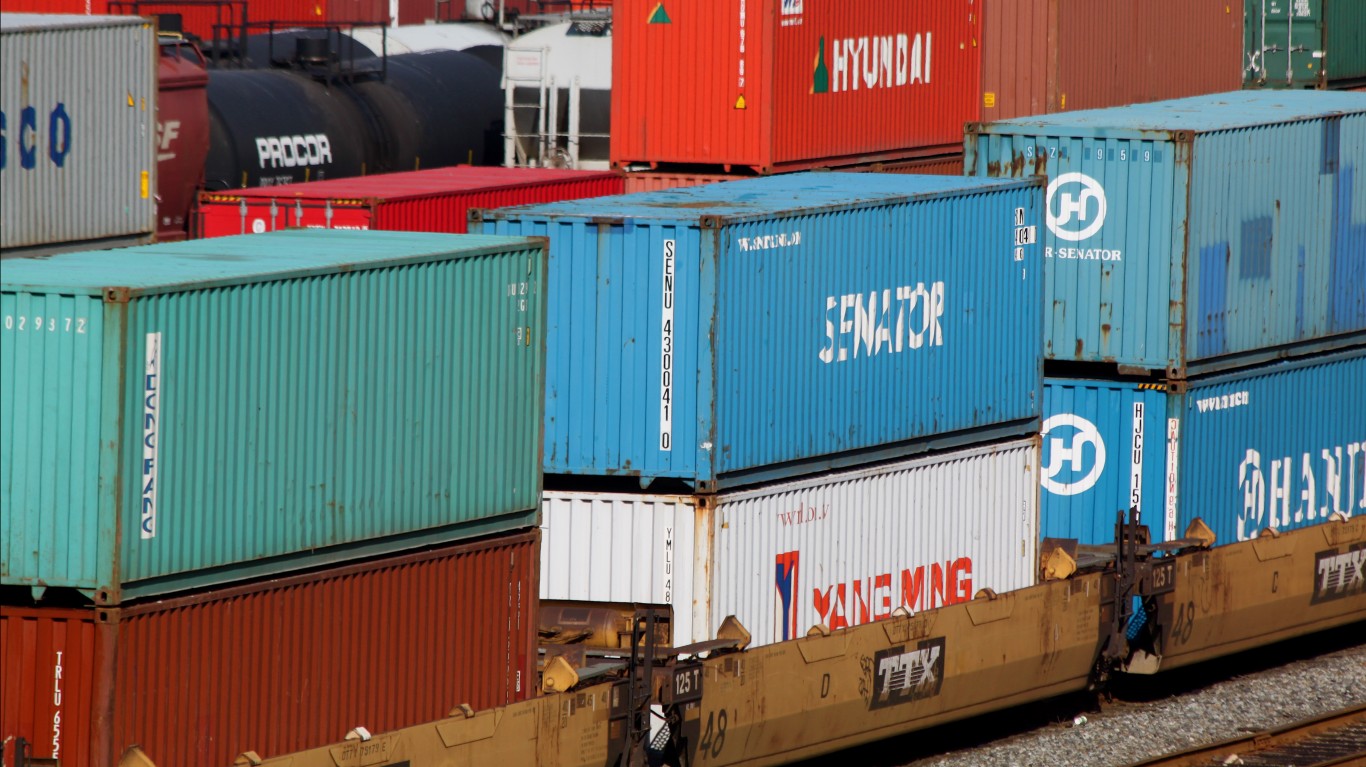For the first time since 1998, global military spending is down. This coincides with a major decline in U.S. spending, which fell by more than $40 billion between 2011 and 2012. Even with this decline, however, the United States still had a military budget four times larger than China, the next biggest spender.
The Stockholm International Peace Research Institute (SIPRI) measures annual military spending for most of the world’s armed countries. According to SIPRI, the United States spent $668 billion, more than the combined budgets of the next 10 countries. While the U.S. budget has declined, some of the other global powers, including Russia and China, have ramped up spending. Based on SIPRI’s 2012 data, these are the countries spending the most on the military.
Click here to see the countries spending the most on the military
The major decline in the U.S. military budget was the result of two factors, explained Carina Solmirano, senior researcher at SIPRI’s Military Expenditure and Arms Production Programme. The first is the severe decline in overseas military spending after America’s eight-year war in Iraq ended in 2011, as well as the continued wind down of operations in Afghanistan, Solmirano said.
“The second reason,” said Solmirano, “is purely economics. … The United States is facing a huge deficit crisis, and as part of the agreements in 2011 and 2012, the Department of Defense agreed to start a reduction of expenditure — quite a significant reduction.” Solmirano added that barring the emergence of a new conflict, U.S. military spending likely will continue to fall.
Short-term changes in military spending, like the nearly 6% decline in the United States, often go hand-in-hand with periods of economic growth or crisis. Indeed, spending among nearly all the top European military powers, including Italy, France and the United Kingdom, declined last year.
Meanwhile, China went against the global trend by increasing its spending by nearly 8% between 2011 and 2012, and by more than 47% since 2008. Part of this increase is for geopolitical reasons, explained Solmirano, who added the increase in spending has “been parallel to its increase in economic power as well.”
Other nations, while not the biggest spenders overall, have much larger military budgets relative to the size of their economies. As of 2012, the United States spent 4.4% of its gross domestic product (GDP) on the military. In countries like Saudi Arabia and Oman, military costs amounted to more than 8% of GDP. Part of this, explained Solmirano, has to do with the consistently tense security situation in the Middle East. She added that countries like Saudi Arabia are able to fund massive militaries with substantial oil revenue.
24/7 Wall St. reviewed the 10 countries that spend the most on their military in 2012, based on SIPRI’s measure of military spending in more than 130 nations. We also reviewed SIPRI data on military exports and imports, as well as military expenditure as a percentage of GDP. From Globalfirepower.com, we reviewed statistics on military size and strength, based on the most recent available data. We also considered GDP and GDP growth figures from the International Monetary Fund (IMF).
10. Brazil
> Military expenditure: $36.8 billion
> Expenditure as pct. of GDP: 1.5%
> One-year spending change: -0.5%
> Total exports: $14.1 million (24th highest)
> Total imports: $212 million (24th highest)
Brazil spent roughly $36.8 billion on its military in 2012, higher than all but nine other countries. Military spending has fallen in Brazil since 2010, when the government spent $38.1 billion. Despite being among the top 10 in military spending, the country is barely among the top half in terms of the spending as a percentage of GDP, which was just 1.5% in 2012. In addition to the more than 371,000 people in Brazil who were actively serving in 2011, there were more than 1.3 million Brazilians serving in the active reserves, more than all but five other countries.
9. India
> Military expenditure: $48.3 billion
> Expenditure as pct. of GDP: 2.5%
> One-year spending change: -2.8%
> Total exports: $1.8 million (32nd highest)
> Total imports: $2.0 billion (the highest)
Military spending in India comprised 2.5% of the country’s GDP in 2012, higher than most other countries. However, this has declined every year since 2009, when India spent 2.9% of its GDP on military affairs. Between 2011 and 2012, India’s military budget declined by 3%. As of 2011, India had more than 1.3 million active military members, more than any other country except for China and the United States. In addition, India had 1.7 million active reserve members, more than any country except for North Korea and South Korea. India has been the biggest arms importer worldwide in recent years, as it has been upgrading its largely Soviet-era weapons.
Also Read: The Most Competitive Cities of the Future
8. Germany
> Military expenditure: $48.6 billion
> Expenditure as pct. of GDP: 1.4%
> One-year spending change: 0.9%
> Total exports: $486 million (6th highest)
>Total imports: $126 million (33rd highest)
Germany spent more than $48.6 billion on its military in 2012, or 1.4% of the country’s GDP. This was in line with the 1.3% of GDP it spent back in 2011 but still lower than the majority of countries measured. Germany exported $486 million worth of arms in 2012, higher than all but five other countries. In 2012, Germany announced the largest cuts to its military since the end of World War II. The government intends to scale back or close 100 of its 400 bases and cut the number of soldiers by 15,000 to 185,000. Germany expects to implement the cuts through 2017 at the latest.
7. Saudi Arabia
> Military expenditure: $54.2 billion
> Expenditure as pct. of GDP: 8.9%
> One-year spending change: 11.7%
> Total exports: n/a
> Total imports: $261 million (16th highest)
Saudi Arabia’s military budget comprised 8.9% of the country’s GDP in 2012, higher than any other country. However, this was down from 11% of GDP in 2009 and 10% of GDP in 2010. Military spending in 2012 has increased by nearly $10 billion since 2008, reaching more than $54.2 billion last year. Between 2011 and 2012 alone, military spending increased by 12%, higher than most other countries in the world. Solmirano pointed out that oil revenue in Saudi Arabia has allowed the country to spend heavily on the military in recent years. As of 2012, Saudi Arabia produced more than 11.1 million barrels of oil a day, more than any other country.
6. Japan
> Military expenditure: $59.2 billion
> Expenditure as pct. of GDP: 1.0%
> One-year spending change: -0.6%
> Total exports: n/a
> Total imports: $6 million (78th highest)
Although just five nations spent more on their military in 2012 in absolute terms, in relative terms — as a percentage of GDP — more than 100 nations spent more than Japan. Prime Minister Shinzo Abe began pushing for a stronger military after winning the office at the end of 2012. Abe’s plans to boost military spending may be limited by the country’s massive debt concerns. The IMF estimates Japan’s gross debt at nearly 238% of GDP in 2012, proportionally more than any other country. Despite these concerns, Japan recently increased military spending for the first time in 11 years. Although Japan’s constitution prohibits initiating military action, Prime Minister Shinzo Abe recently has argued that the country should be permitted to join U.N.-sanctioned military actions.
5. United Kingdom
> Military expenditure: $59.8 billion
> Expenditure as % of GDP: 2.5%
> One-year spending change: -0.8%
> Total exports: $351 million (10th highest)
> Total imports: $254 million (17th highest)
Military spending in the United Kingdom fell for the second straight year in 2012. This was likely due, in part, to a slow GDP growth of less than 1% for the second straight year and a decline in government spending as a percentage of GDP for the third straight year. Early this year, the United Kingdom cut 5,000 troops from its armed forces as part of the nation’s broad austerity measures. The U.K. spent just 2.5% of GDP on the military in 2012 and exported just over $350 million in weapons. By contrast, 25 years earlier, the nation spent 4.0% of its annual GDP on its military and exported $2.5 billion worth of arms.
Also Read: The Most Dangerous Cities in America
4. France
> Military expenditure: $62.6 billion
> Expenditure as pct. of GDP: 2.3%
> One-year spending change: -0.3%
> Total exports: $272 million (11th highest)
> Total imports: $87 million (38th highest)
France’s military budget of $62.6 billion in 2012 was higher than any other country in the European Union. However, this has declined every year since 2009, when military spending reached more than $69.4 billion. The military cuts are not over. In April, France announced it would freeze military spending, with an expected budget of roughly $235 billion for the next six years. By 2019, France is expected to reduce its armed forces headcount by 34,000, or nearly 10% of its current force. As of 2011, France had more active military members than all other countries in the EU at 362,485.
3. Russia
> Military expenditure: $90.6 billion
> Expenditure as pct. of GDP: 4.4%
> One-year spending change: 15.7%
> Total exports: $3.8 billion (2nd highest)
> Total imports: $8.2 million (74th highest)
Russia’s military budget has grown significantly in the past several years. In 2008, Russia spent just under $68 billion, or 3.7% of GDP. By 2012, the military budget had grown to more than $90.6 billion, or 4.4% of GDP. The largest increase in spending came between 2011 and 2012, when the budget was increased by 16%. Russia has been in the process of upgrading its weapons over the past several years, working to replace aging submarines, assault ships and ballistic missiles. Russia was the second-largest exporter of weapons in 2012, shipping out more than $3.8 billion in arms. Russia has more self-propelled guns and Corvette missiles than any other country.
2. China
> Military expenditure: $157.6 billion
> Expenditure as pct. of GDP: 2.0%
> One-year spending change: 7.8%
> Total exports: $443 million (8th highest)
> Total imports: $872 million (4th highest)
China increased its annual military expenditure from $107 billion in 2008 to more than $157 billion in 2012. Despite this spending increase, military expenditure as a percentage of GDP has remained relatively stable at around 2%. China has had one of the world’s fastest growing economies in recent years, even with GDP growth slowing to 7.8% in 2012. Currently, China is embroiled in a tense dispute with Japan over the resource-rich Diaoyu islands (called the Senkaku islands in Japan). China also historically has had tense relations with Taiwan, which it still considers to be a breakaway province.
1. United States
> Military expenditure: $668.8 billion
> Expenditure as pct. of GDP: 4.4%
> One-year spending change: -6.0%
> Total exports: $6.2 billion (the highest)
> Total imports: $670 million (6th highest)
The United States spends more on the military than any other country by a wide margin. The country’s military budget accounts for roughly 40% of all military spending in the world, according to SIPRI. However, military spending has declined since 2010, when it hit more than $720 billion. Much of the drop has been due to reduced presence in Iraq and Afghanistan. The United States is by far the largest arms exporter in the world — in 2012 the United States exported more than $6.2 billion worth of arms, more than $2.4 billion more than the second-largest exporter, Russia. Earlier in June, the White House announced it was arming Syrian opposition against Syrian President Bashar al-Assad’s regime.
Also Read: Countries with the Most Vacation Days
Are You Ahead, or Behind on Retirement?
If you’re one of the over 4 Million Americans set to retire this year, you may want to pay attention. Many people have worked their whole lives preparing to retire without ever knowing the answer to the most important question: am I ahead, or behind on my goals?
Don’t make the same mistake. It’s an easy question to answer. A quick conversation with a financial advisor can help you unpack your savings, spending, and goals for your money. With Zoe Financial’s free matching tool, you can connect with trusted financial advisors in minutes.
Why wait? Click here to get started today!
Thank you for reading! Have some feedback for us?
Contact the 24/7 Wall St. editorial team.



